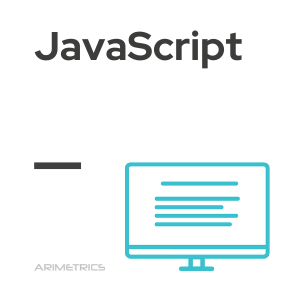
Definition:
JavaScript is a programming language originally designed to add interactivity to web pages and create web applications. Despite the similarity in name, it is not related to Java. It is used in the development of web pages for tasks such as automatically changing the date of a page, making a page appear in a pop-up window when you click on a link or having a text or image change when you hover over it. It is also often used to make surveys and forms.
One of its advantages is that it runs directly in the user’s browser, eliminating the need for constant downloads from the server, which improves the efficiency and speed of web applications.
JavaScript language features
JavaScript is a high-level, dynamic and interpreted language. It is defined as object-oriented, prototype-based, imperative and weakly typed. Along with HTML and CSS, it is one of the three essential technologies in the world’s web production: most websites employ it and it is compatible with all modern browsers without the need for plug-ins. JavaScript has an API for working with text, arrays, dates and regular expressions.
Despite some names and similarities in the standard library, JavaScript and Java have no relationship and have very different semantics. JavaScript syntax is actually derived from C, while its semantics and design are influenced by the Self and Scheme programming languages.
Origin and Evolution of JavaScript
JavaScript was created in 1995 by Brendan Eich while working at Netscape Communications. Originally called Mocha, then LiveScript, it was eventually renamed to JavaScript as part of a marketing strategy to capitalize on the popularity of Java at the time. Its initial purpose was to enable the creation of more dynamic and interactive Web pages by providing developers with a simple tool to implement basic client-side functionality. Evolution of JavaScript:
- ECMAScript Standard (1997): JavaScript was standardized by ECMA International, which led to the creation of the ECMAScript standard, which has guided its development ever since.
- AJAX (2000s): The introduction of AJAX (Asynchronous JavaScript and XML) enabled the creation of faster and more dynamic web applications, improving interaction without the need to reload the page.
- Node.js (2009): The emergence of Node.js allowed JavaScript to run on the server side, extending its use beyond the browser and enabling the development of complete applications using a single language.
- Frameworks and modern libraries (2010s): With the rise of frameworks such as Angular, React and Vue.js, JavaScript established itself as an essential language for modern web application development, facilitating the creation of complex and efficient user interfaces.
- ECMAScript 6 (2015): The introduction of ECMAScript 6 (ES6) brought significant improvements to the language, including new syntax and features that simplified development and encouraged more robust programming practices.
- Continuous updates: JavaScript continues to evolve with annual updates to the ECMAScript standard, incorporating new features that maintain its relevance and adaptability in the changing technology landscape.
What JavaScript is used for
JavaScript is also used in non-web-based environments such as PDF documents, site-specific browsers and desktop widgets. Much newer and faster JavaScript virtual machines(VMs),as well as platforms built on this language, have increased the popularity of JavaScript for web applications. On the client side, JavaScript has traditionally been applied as an interpreted language, but newer browsers can compile on the spot.
It is also used in video game development, in the creation of desktop and mobile applications and in server-side programming with runtime environments such as Node.js. To interact with a web page, the JavaScript language of an implementation of the Document Object Model (DOM) is provided.
JavaScript was normally used in HTML web pages to perform operations and only in the client application framework, without access to server functions. It is currently used to send and receive information from the server along with the help of other technologies such as AJAX. JavaScript is interpreted in the user agent at the same time that the statements are downloaded along with the HTML code.
